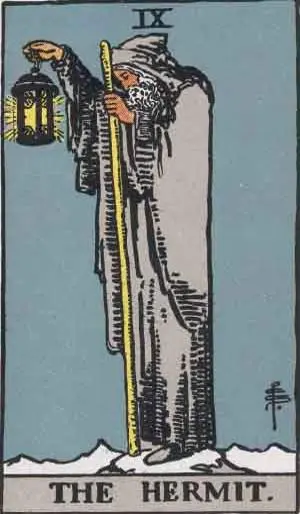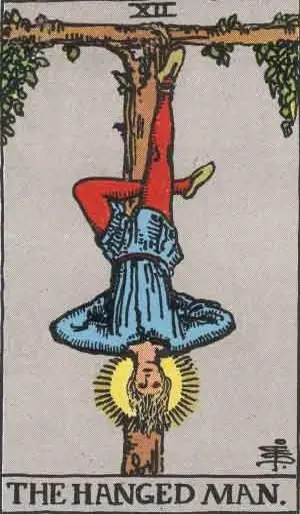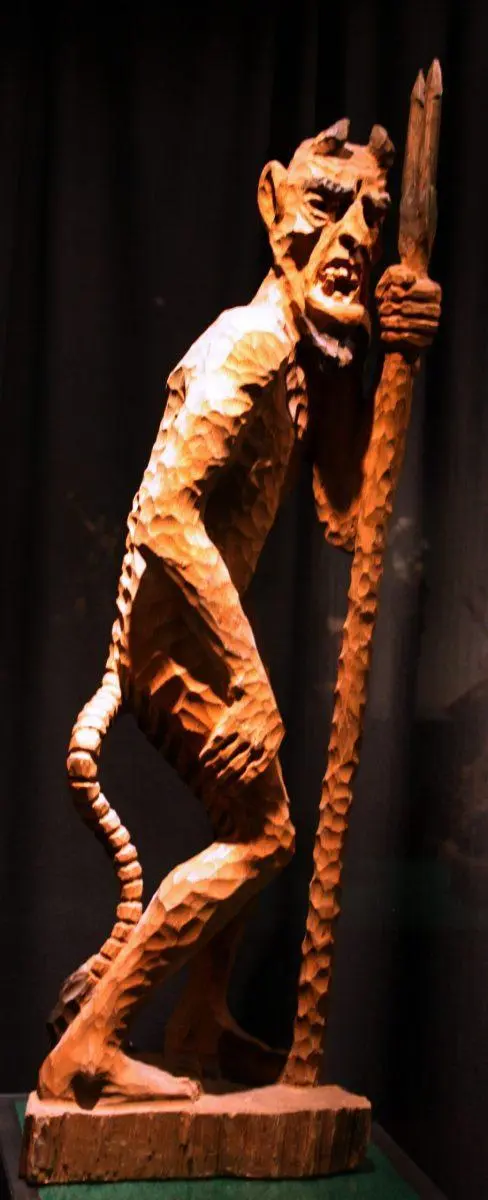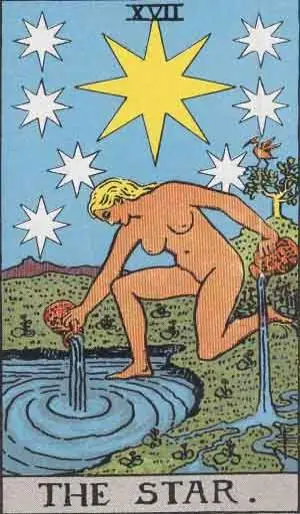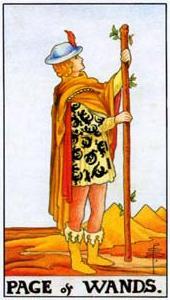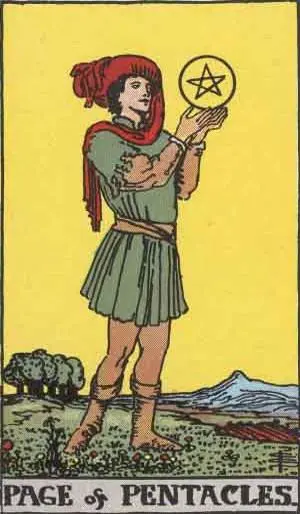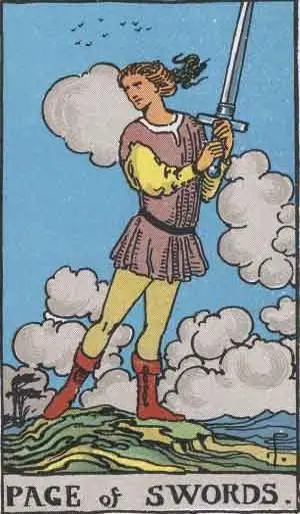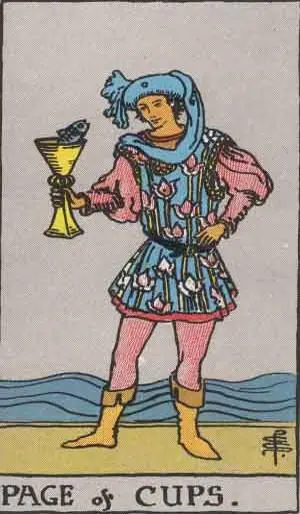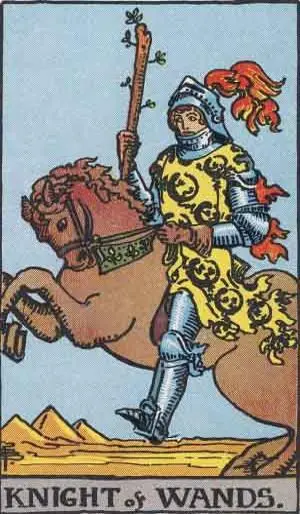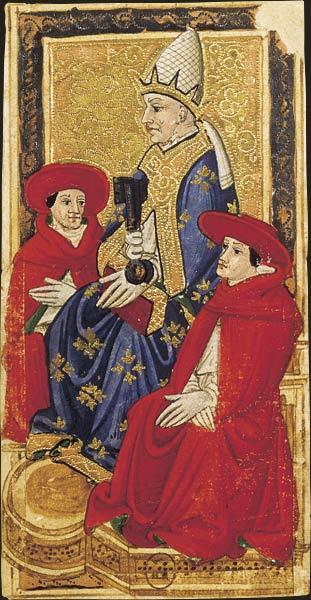

Tarot cards are rich in symbolism, and if you understand the symbols on the cards, you can offer a complete reading of the Tarot by interpreting them even if you don't know individual values of each card ... Depending on the tarot decks you use, the symbols come from numerology , archetypal energies and symbols, meanings of colors, astrology and spiritual symbolism, among others. If you ever feel stuck while reading the Tarot, refer to the card symbols for more information.
The symbols discussed below are found in traditional tarot decks based on Latin tarot Such as Ryder-Waite-Smith deck ... Many modern decks come with different images, organizations, themes, and symbols. However, you can interpret the symbols on these cards using symbols from interpretation of dreams or psychic symbols , numerology , Jungian archetypes and the meanings of colors to focus on reading.
The 56 cards that make up the Minor Arcana of the Tarot deck are divided into suits, similar to a regular deck of 52 playing cards. The suits of the minor arcana are pentacles, wands, cups and swords. The values of each suit are based on four classic elements : earth, air, fire and water.
Pentacles are classic element of earth ... It is a grounded element and it is based on the physical. Hence, when the card of pentacles appears in spread tarot , she provides information about the physical state of the querent or discusses information about the physical (material) world in which the querent lives. Some of the topics that the pentacle card might address include the following.

Cups represent the element of water ... An easy way to remember this is that the cups contain water. Water is an emotional element, so when cups appear on the Tarot spread, it solves problems primarily related to emotions. Some of the topics that might be presented on a card with cups include the following.

The wands represent the element of fire ... An easy way to remember this is to imagine sparks emanating from the end of the wand. Fire is an active primary energy associated with spirituality and higher thoughts. It is also associated with passion and drive. When the wands appear upon reading, they may indicate some of the following.
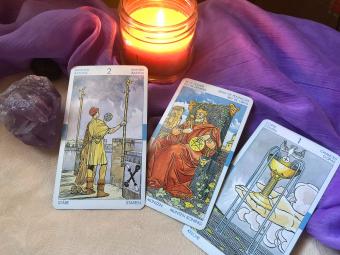
Swords represent the element of air. An easy way to remember this is to imagine a sword flying in the air. Air is associated with your mental self and the realm of thought. Some of the things swords can represent when they appear in tarot reading include the following.
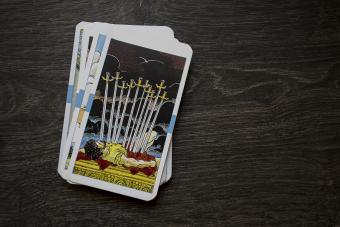
As in a regular deck of cards, each tarot card of the minor arcana is either a card with number (from ace to 10), or a court card (Page, Knight, Queen, King). Each of them has its own symbolic meaning.

| Number | Symbolism |
| 1 (salt) | New beginnings, unity |
| 2 | Relationship, duality, balance, partnership |
| 3 | Creativity |
| 4 | Stability, structure |
| 5 | Conflict, growth, change |
| 6 | Harmony |
| 7 | Life lessons, spiritual growth |
| 8 | Understanding and achievement |
| 9 | Success coming to the end of the cycle |
| 10 | Completion, enlightenment |
Court cards are the face cards of each Tarot suit. There are four of them in each suit, and they symbolize the following.

| The map | Symbolism |
| Page | Youthful energy, service |
| knight | Action, mature energy, moving forward |
| Queen | Empathy, compassion |
| king | Leadership, achievement, success |
Tarot cards are colorful and the colors chosen in the images usually have a symbolic meaning based on the psychological effects of colors and color associations. spiritual energy с chakras or auras ... Therefore, when interpreting a tarot card, pay attention to the colors chosen by the artist or printer, as well as the images and numerology.

| Color | Symbolism |
| Black | Protection, grounding, darkness or missing elements, disease, negativity, root chakra |
| red | Grounding, safety, security, passion, anger, root chakra |
| Pink | Love, femininity, compassion, forgiveness, heart chakra |
| orange | Joy, creative ideas, optimism, sacral chakra |
| brown | Stability, neutrality, comfort, earthiness, turbidity or lack of boundaries, sacral chakra. |
| Yellow | Opportunity, immediacy, enthusiasm, solar plexus chakra |
| Gold | Mastery, Divinity, Spiritual Leadership, Crown Chakra or higher |
| Green | Healing, love, harmony, balance, envy, bitterness, heart chakra |
| Blue | Communication, peace, self-expression, trust, sadness, judgment and criticism, throat chakra |
| Purple | Intuition, psychic abilities , spirituality, intelligence, critical thinking, third eye chakra |
| white | Divine connection, higher self, novelty, inexperience, birth, crown chakra |
| Silver | Emotions, sensitivity, sympathy , crown chakra |
Most tarot decks have detailed images on each card. Elements in a scene can help the reader interpret the ideas gathered during the reading. Many of these elements are not what they seem, but they are symbolic and can have a slightly different meaning from the obvious.

| Picture | Symbolism |
| Angels |
|
| Blindfolded |
|
| Cat |
|
| Dog |
|
| Flag |
|
| Grapes |
|
| Hammer |
|
| Ice |
|
| Keys |
|
| Lizard |
|
| Луна |
|
| Ocean |
|
| Pillar |
|
| Rain |
|
| Ship |
|
| Tree |
|
| Wreath |
|
There are 22 basic arcana cards in the Ryder-Waite-Smith Tarot. Each of the major arcana cards has symbolism based on numerology and archetypes. The cards of the major arcana are numbered from 0 to XXI (21) and depict the path of the soul from novelty and innocence to enlightenment. LoveToKnow has articles offering an in-depth analysis of each of the major arcana cards, their symbolism and meaning.

| Map of the Senior Arcana | Symbolism |
| 0 Fool | Innocence, the beginning of the journey |
| I am a magician | Creation, alchemy |
| II High Priestess | Subconscious, intuition |
| III Empress | Femininity, compassion, wise woman |
| IV Emperor | Power, power |
| In Hierophant | Spiritual guidance |
| VI Lovers | Relationships, partnerships |
| VII Chariot | Goals, ambitions and motivation |
| VIII Power | Courage, perseverance and the ability to face life's challenges |
| IX Hermit | Go inside to find wisdom |
| X Wheel of Fortune | Impermanence, change |
| XI Justice | Fairness, balance |
| XII The Hanged Man | Patience, perspective |
| XIII Death | Changes, new beginnings, endings |
| XIV Moderation | Moderation |
| XV Devil | Temptation, control, or lack thereof |
| XVI Tower | Cataclysmic change |
| XVII Star | Healing, Hope, Encouragement |
| XVIII Moon | Subconscious, deep fears or emotions, reflections |
| XIX Sun | Happiness, joy, excitement, awakening |
| XX verdict | Recognizing how your past actions affect others, taking stock, correcting past wrongdoings |
| XXI World | Completion, end of cycle or quest |
There are also different ways of interpreting the symbols of tarot cards. The most universal way of interpreting them is universal. For example, Jungian archetypes are considered universal symbols. That is, these are symbols that are recognized by everyone, regardless of race, religion, culture or family, because they come from the collective consciousness of humanity as a whole. Examples of universal symbolism include pregnancy and childbirth as meaning creativity or the heart as a symbol of love. Other structures with which you can interpret symbols include the following.
They tend to be personal and individual. For example, if you had a pet cat as a child, it may symbolize joy, love, or happiness for you.
Families and tribes have their own symbols within the tribal unit, and they vary from tribe to tribe. For example, family crests, family crests, or Scottish family rugs have tribal or family symbolism that cannot be universally recognized.
The area you live in also affects how you view certain characters. For example, if a dolphin is the mascot at a local high school, the dolphin may represent studies or athletic performance at the regional level.
Each of these social units has its own symbolism that is important and recognizable to this group. For example, in the United States, the eagle symbolizes freedom, and in the Christian religion, the cross represents the crucifixion of Christ. As another example, almost universally among Western countries, the swastika represents the Nazi Party and the atrocities of World War II, but in the Hindu religion it represents sun, prosperity and good fortune.
All of the above is included in the interpretation of Tarot cards based on their symbolism. Therefore, careful consideration of each of them is useful when reading the Tarot. Since you often don’t know what the querent’s personal, tribal, or cultural symbolism is, if you read their tarot cards, you can ask them what they notice in the card images and what these things represent to them before moving on. to a more general reading.

